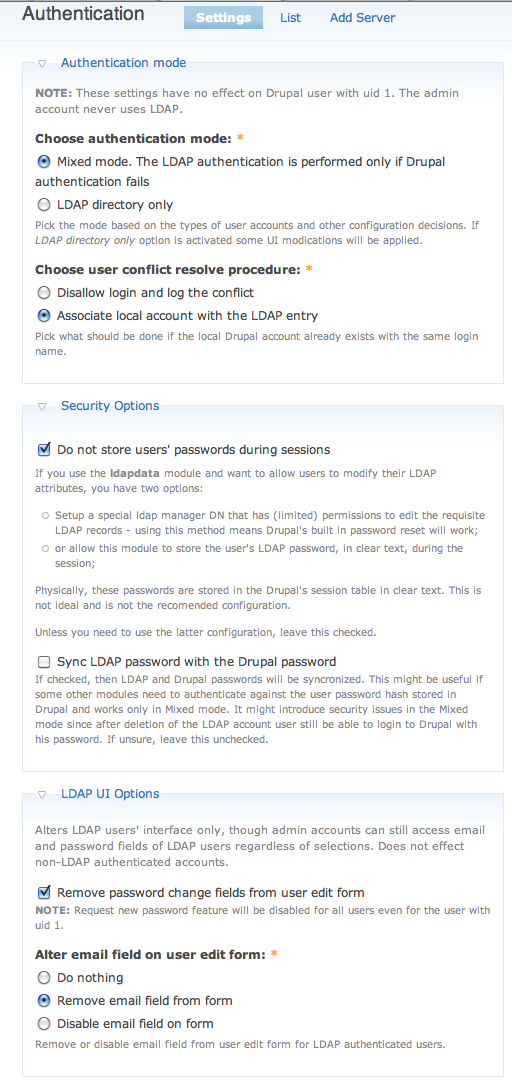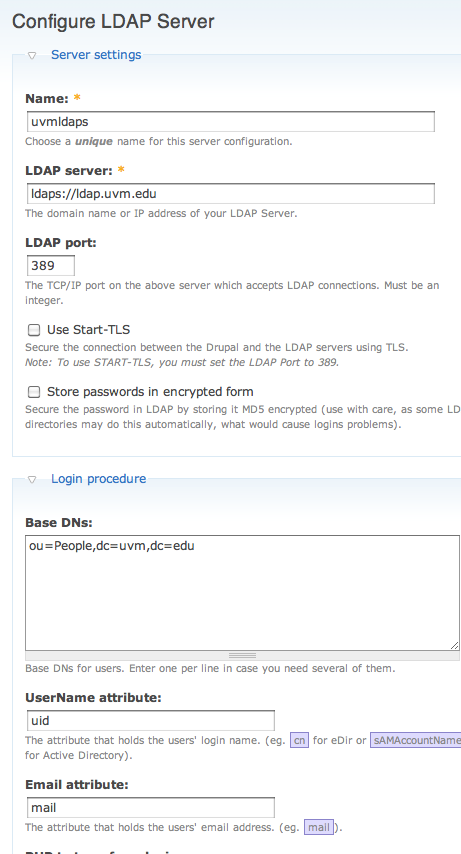root@weasel.uvm.edu 193>gem update rail
Updating installed gems
Updating rails
Successfully installed activesupport-2.3.5
Successfully installed activerecord-2.3.5
Successfully installed rack-1.0.1
Successfully installed actionpack-2.3.5
Successfully installed actionmailer-2.3.5
Successfully installed activeresource-2.3.5
Successfully installed rails-2.3.5
Gems updated: activesupport, activerecord, rack, actionpack, actionmailer, activeresource, rails
root@weasel.uvm.edu 194>gem install vlad
Successfully installed open4-0.9.6
Successfully installed vlad-2.0.0
2 gems installed
Installing ri documentation for vlad-2.0.0...
Installing RDoc documentation for vlad-2.0.0...
root@weasel.uvm.edu 195>gem install vlad-git
Successfully installed vlad-git-2.1.0
1 gem installed
Installing ri documentation for vlad-git-2.1.0...
Installing RDoc documentation for vlad-git-2.1.0...
weasel:~ waw$ /usr/local/git/bin/git clone git@github.com:uvmctl/registical.git
Initialized empty Git repository in /Users/waw/registical/.git/
The authenticity of host 'github.com (207.97.227.239)' can't be established.
RSA key fingerprint is 16:27:ac:a5:76:28:2d:36:63:1b:56:4d:eb:df:a6:48.
Are you sure you want to continue connecting (yes/no)? yes
Warning: Permanently added 'github.com,207.97.227.239' (RSA) to the list of known hosts.
Identity added: /Users/waw/.ssh/id_rsa (/Users/waw/.ssh/id_rsa)
remote: Counting objects: 1346, done.
remote: Compressing objects: 100% (894/894), done.
Receiving objects: 100% (1346/1346), 5.25 MiB | 1.21 MiB/s, done.
remote: Total 1346 (delta 738), reused 783 (delta 385)
Resolving deltas: 100% (738/738), done.
waw$ sudo gem install validates_timeliness authlogic mbleigh-acts-as-taggable-on icalendar chronic ruby-net-ldap mislav-will_paginate thoughtbot-factory_girl rspec-rails rspec cucumber webrat
Successfully installed validates_timeliness-2.2.2
Successfully installed authlogic-2.1.3
ERROR: could not find gem mbleigh-acts-as-taggable-on locally or in a repository
Successfully installed icalendar-1.1.0
ERROR: Error installing chronic:
gemcutter requires RubyGems version >= 1.3.5
Successfully installed ruby-net-ldap-0.0.4
ERROR: could not find gem mislav-will_paginate locally or in a repository
ERROR: could not find gem thoughtbot-factory_girl locally or in a repository
**************************************************
Thank you for installing rspec-1.3.0
Please be sure to read History.rdoc and Upgrade.rdoc
for useful information about this release.
**************************************************
**************************************************
Thank you for installing rspec-rails-1.3.2
If you are upgrading, do this in each of your rails apps
that you want to upgrade:
$ ruby script/generate rspec
Please be sure to read History.rdoc and Upgrade.rdoc
for useful information about this release.
**************************************************
Successfully installed rspec-1.3.0
Successfully installed rspec-rails-1.3.2
**************************************************
Thank you for installing rspec-1.3.0
Please be sure to read History.rdoc and Upgrade.rdoc
for useful information about this release.
**************************************************
Successfully installed rspec-1.3.0
(::) (::) (::) (::) (::) (::) (::) (::) (::) (::) (::) (::) (::) (::) (::)
(::) U P G R A D I N G (::)
Thank you for installing cucumber-0.6.2.
Please be sure to read http://wiki.github.com/aslakhellesoy/cucumber/upgrading
for important information about this release. Happy cuking!
(::) (::) (::) (::) (::) (::) (::) (::) (::) (::) (::) (::) (::) (::) (::)
Successfully installed term-ansicolor-1.0.4
Successfully installed polyglot-0.2.9
Successfully installed treetop-1.4.3
Successfully installed builder-2.1.2
Successfully installed diff-lcs-1.1.2
Successfully installed cucumber-0.6.2
Building native extensions. This could take a while...
Successfully installed nokogiri-1.4.1
Successfully installed rack-test-0.5.3
Successfully installed webrat-0.7.0
16 gems installed
Installing ri documentation for validates_timeliness-2.2.2...
Installing ri documentation for authlogic-2.1.3...
Installing ri documentation for icalendar-1.1.0...
Installing ri documentation for ruby-net-ldap-0.0.4...
Installing ri documentation for rspec-1.3.0...
Installing ri documentation for rspec-rails-1.3.2...
Installing ri documentation for rspec-1.3.0...
Installing ri documentation for term-ansicolor-1.0.4...
Installing ri documentation for polyglot-0.2.9...
Installing ri documentation for treetop-1.4.3...
Installing ri documentation for builder-2.1.2...
ERROR: While generating documentation for builder-2.1.2
... MESSAGE: Unhandled special: Special: type=17, text=""
... RDOC args: --ri --op /Library/Ruby/Gems/1.8/doc/builder-2.1.2/ri --title Builder -- Easy XML Building --main README --line-numbers --quiet lib CHANGES Rakefile README doc/releases/builder-1.2.4.rdoc doc/releases/builder-2.0.0.rdoc doc/releases/builder-2.1.1.rdoc
(continuing with the rest of the installation)
Installing ri documentation for diff-lcs-1.1.2...
Installing ri documentation for cucumber-0.6.2...
Installing ri documentation for nokogiri-1.4.1...
No definition for parse_memory
No definition for parse_file
No definition for parse_with
No definition for get_options
No definition for set_options
Installing ri documentation for rack-test-0.5.3...
Installing ri documentation for webrat-0.7.0...
Installing RDoc documentation for validates_timeliness-2.2.2...
Installing RDoc documentation for authlogic-2.1.3...
Installing RDoc documentation for icalendar-1.1.0...
Installing RDoc documentation for ruby-net-ldap-0.0.4...
Installing RDoc documentation for rspec-1.3.0...
Could not find main page README.rdoc
Could not find main page README.rdoc
Could not find main page README.rdoc
Could not find main page README.rdoc
Installing RDoc documentation for rspec-rails-1.3.2...
Could not find main page README.rdoc
Could not find main page README.rdoc
Could not find main page README.rdoc
Could not find main page README.rdoc
Installing RDoc documentation for rspec-1.3.0...
Could not find main page README.rdoc
Could not find main page README.rdoc
Could not find main page README.rdoc
Could not find main page README.rdoc
Installing RDoc documentation for term-ansicolor-1.0.4...
Installing RDoc documentation for polyglot-0.2.9...
Installing RDoc documentation for treetop-1.4.3...
Installing RDoc documentation for builder-2.1.2...
Installing RDoc documentation for diff-lcs-1.1.2...
Installing RDoc documentation for cucumber-0.6.2...
Installing RDoc documentation for nokogiri-1.4.1...
No definition for parse_memory
No definition for parse_file
No definition for parse_with
No definition for get_options
No definition for set_options
Installing RDoc documentation for rack-test-0.5.3...
Installing RDoc documentation for webrat-0.7.0...
Seems that wasn’t enough. Had to also
sudo gem update --system
Password:
Updating RubyGems
Updating rubygems-update
Successfully installed rubygems-update-1.3.5
:0:Warning: Gem::SourceIndex#search support for String patterns is deprecated
Updating RubyGems to 1.3.5
Installing RubyGems 1.3.5
RubyGems 1.3.5 installed
?=== 1.3.5 / 2009-07-21
Bug fixes:
* Fix use of prerelease gems.
* Gem.bin_path no longer escapes path with spaces. Bug #25935 and #26458.
Deprecation Notices:
* Bulk index update is no longer supported (the code currently remains, but not
the tests)
* Gem::manage_gems was removed in 1.3.3.
* Time::today was removed in 1.3.3.
------------------------------------------------------------------------------
RubyGems installed the following executables:
/System/Library/Frameworks/Ruby.framework/Versions/1.8/usr/bin/gem
Now rerun
sudo gem install validates_timeliness authlogic mbleigh-acts-as-taggable-on icalendar chronic ruby-net-ldap mislav-will_paginate thoughtbot-factory_girl rspec-rails rspec cucumber webrat
hmmm still missing stuff but now
sudo rake gems:install
seems to work
but
rake db:migrate
fails






